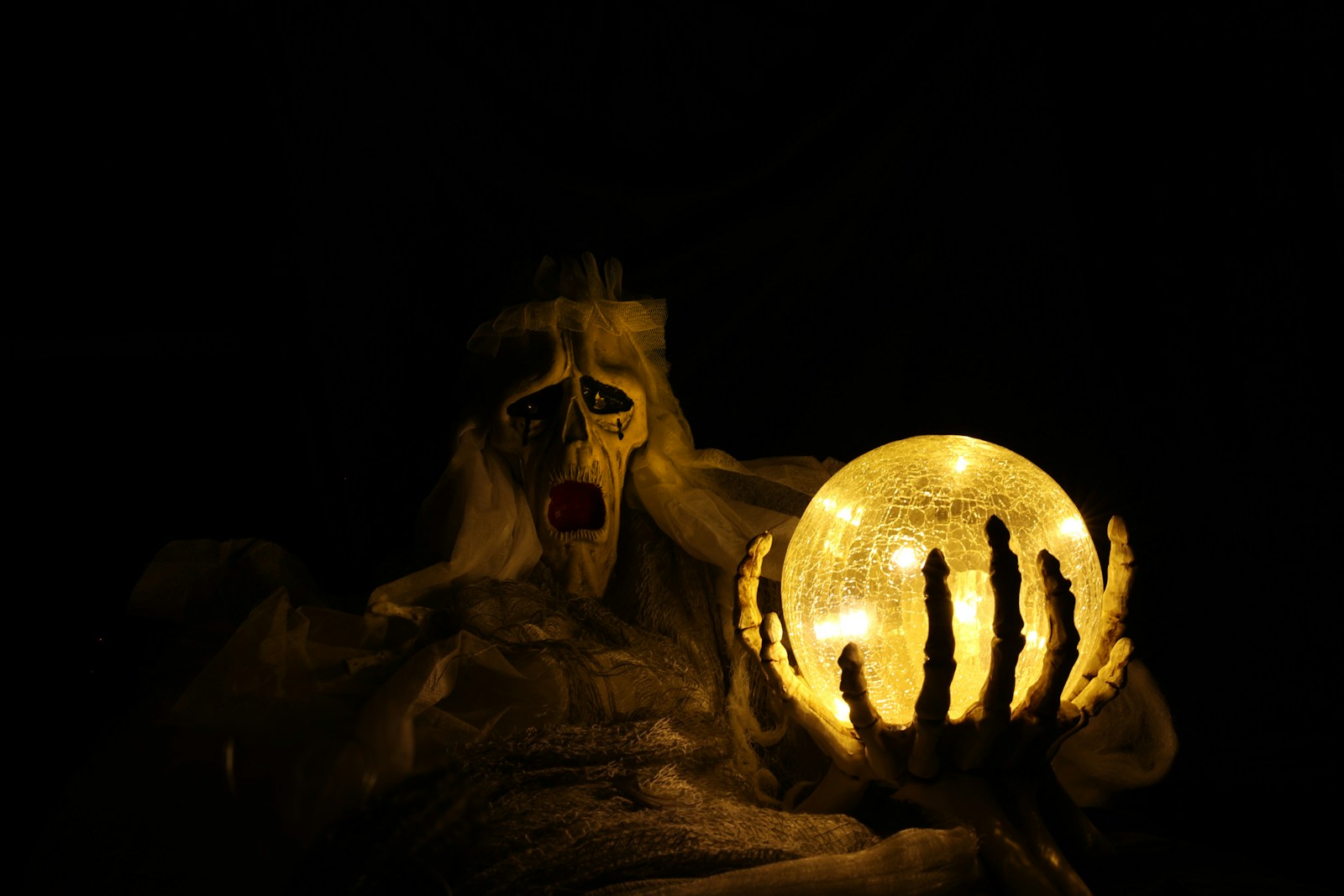The Psychology of Fear and Pleasure
The Thrill of Controlled Fear
One of the key reasons people enjoy horror movies is the thrill of experiencing controlled fear. Unlike real-life dangers, which can be overwhelming and harmful, horror films provide a safe environment where viewers can confront their fears without facing any actual risk. This controlled fear allows individuals to explore intense emotions, such as terror, anxiety, and suspense, in a way that is both exciting and manageable.
The adrenaline rush that accompanies these emotions can be exhilarating, as the body’s “fight or flight” response is triggered. This response involves the release of adrenaline and other stress hormones, which heighten alertness and energy levels. For some viewers, the physical sensations of increased heart rate, quickened breathing, and heightened senses add to the excitement of watching a horror movie. To illustrate, consider classic films like “Psycho” or “The Exorcist,” where the tension builds so effectively that audiences can’t help but feel their hearts race in tandem with the on-screen action.
Catharsis and Emotional Release
Horror movies also offer a form of catharsis, providing an outlet for the release of pent-up emotions. The intense fear and anxiety experienced during a horror film can lead to a sense of relief and release once the movie is over. This emotional rollercoaster can be satisfying, as it allows viewers to purge negative feelings in a controlled and temporary way.
The concept of catharsis is rooted in ancient Greek philosophy, where it was believed that watching tragic plays could help audiences purge their emotions and achieve a sense of emotional balance. Similarly, horror movies can provide a modern form of catharsis, allowing viewers to experience and then release powerful emotions, ultimately leading to a sense of psychological relief. For instance, after watching a particularly frightening scene, the laughter and chatter that often follow can signal a communal release of tension and fear.
Curiosity and the Desire to Understand the Unknown
Humans are naturally curious creatures, and horror movies tap into this curiosity by exploring the unknown, the supernatural, and the taboo. Horror films often delve into subjects that are mysterious, unsettling, or difficult to comprehend, such as ghosts, monsters, or the darker aspects of human nature. For many viewers, the allure of the unknown is irresistible, as it challenges them to confront and make sense of things that lie beyond ordinary experience.
This curiosity is often linked to a deeper psychological desire to understand and control the fears that arise from the unknown. By watching horror movies, individuals can explore these fears in a structured narrative, gaining insight into their own anxieties and the ways in which they respond to fear. An example of this is the fascination with the “found footage” genre, where the blurred lines between reality and fiction invite viewers to question their perceptions and confront the unknown.
The Social and Cultural Appeal of Horror Movies
Shared Experiences and Social Bonding
Watching horror movies is often a social activity, and the shared experience of fear can create a strong sense of bonding among viewers. Whether it’s a group of friends huddled together in a dark theater or a family watching a scary movie at home, the collective experience of fear can foster a sense of unity and camaraderie.
The social aspect of horror movies is particularly evident in the way people discuss and analyze the films after watching them. Sharing reactions, discussing favorite scenes, and debating the scariest moments can enhance the overall enjoyment of the movie, as it allows viewers to connect with others who have experienced the same emotional journey. A great example is the phenomenon of midnight screenings, where fans gather to watch cult classics like “The Rocky Horror Picture Show,” engaging in interactive participation that amplifies the communal thrill.
The Appeal of the Taboo and Transgression
Horror movies often explore themes and subjects that are considered taboo or transgressive, such as violence, death, and the supernatural. These elements can be both shocking and intriguing, as they challenge societal norms and push the boundaries of what is considered acceptable or safe. For some viewers, the thrill of watching something taboo is part of the appeal, as it allows them to explore the darker sides of human nature in a controlled environment.
This transgressive aspect of horror movies can be both liberating and exhilarating, as it provides a way to confront and process fears and anxieties that are often repressed or ignored in everyday life. Take, for example, the “torture porn” subgenre, which includes films like “Saw” and “Hostel.” These movies push viewers to their limits, confronting them with extreme scenarios that challenge comfort zones and provoke deep reflection on human capabilities and morality.
Cultural and Historical Context
Horror movies often reflect the cultural and historical anxieties of the time in which they are made. For example, the fear of nuclear war and the unknown consequences of scientific experimentation were central themes in many horror films of the 1950s and 1960s. Similarly, modern horror films often explore contemporary issues such as technology, isolation, and the breakdown of social order.
By engaging with these themes, horror movies allow viewers to explore and process the collective fears and anxieties of their culture. This cultural relevance adds depth to the horror genre, making it not just a source of entertainment but also a mirror of societal concerns. The rise of pandemic-themed horror films in recent years, such as “Contagion,” reflects this trend, tapping into widespread fears about global health crises and the fragility of social structures.
The Physiological and Neurological Aspects of Watching Horror Movies
The Brain’s Response to Fear
When watching a horror movie, the brain responds to the perceived threat as if it were real, triggering the “fight or flight” response. This response involves the activation of the amygdala, the part of the brain responsible for processing fear, and the release of stress hormones such as adrenaline and cortisol. Despite the fact that the viewer knows the threat is not real, the brain’s response can be intense, leading to physical sensations such as increased heart rate, sweating, and muscle tension.
For some individuals, this heightened state of arousal can be pleasurable, as it provides a rush of excitement and energy. The experience is somewhat akin to riding a roller coaster, where the knowledge of being safe allows one to enjoy the thrill and excitement without real danger. Movies like “A Quiet Place,” which utilize silence and sudden noise to heighten suspense, are masterful at engaging these physiological responses.
The Role of Dopamine and the Reward System
The brain’s reward system also plays a role in the enjoyment of horror movies. The release of dopamine, a neurotransmitter associated with pleasure and reward, occurs when viewers successfully navigate the fear and suspense of a horror film. This dopamine release can create a sense of satisfaction and enjoyment, reinforcing the desire to seek out similar experiences in the future.
The combination of fear and reward creates a unique and potent experience that can be highly addictive for some viewers. The thrill of facing and overcoming fear, coupled with the pleasure of the dopamine release, makes horror movies a compelling and satisfying form of entertainment. Consider the popularity of franchises like “The Conjuring” or “Paranormal Activity,” where the promise of familiar yet fresh scares keeps audiences coming back for more.
Common Mistakes and How to Avoid Them
While many enjoy the thrill of horror films, some common mistakes can detract from the experience. Watching horror movies in an overly distracting environment can break the immersion, reducing the impact of fear and suspense. To maximize enjoyment, it’s best to watch in a quiet, dark setting where external distractions are minimized.
Another mistake is choosing a horror movie that doesn’t align with your preferences or tolerance for fear. With so many subgenres, from psychological thrillers to slasher films, selecting a movie that suits your taste can greatly enhance your viewing experience. Researching reviews or seeking recommendations based on previous favorites can help you find the right fit.
Practical Tips for Enjoying Horror Movies
To make the most out of watching horror movies, consider these practical tips:
- Choose the Right Setting: Watch in a dimly lit room with minimal distractions to enhance the atmosphere.
- Select the Right Company: Watching with friends or family who share your enthusiasm for horror can amplify the experience.
- Know Your Limits: Be mindful of your comfort level with certain themes or scenes, and don’t hesitate to take breaks if needed.
- Engage with the Story: Discuss the plot and themes with others after watching, as this can deepen your understanding and appreciation.
Engaging with Horror Beyond the Screen
The horror genre extends beyond just movies, encompassing literature, video games, and immersive experiences like haunted houses. Each medium offers a different way to explore fear and suspense. For instance, horror video games like “Resident Evil” or “Silent Hill” allow players to actively participate in the narrative, heightening the sense of fear through interactivity.
Similarly, haunted attractions provide a physical space where individuals can experience fear in a controlled yet tangible setting. These experiences highlight the versatility and appeal of horror as a genre, offering various avenues for people to explore their fascination with fear.
The enjoyment of horror movies is a complex phenomenon that involves psychological, social, and physiological factors. From the thrill of controlled fear and the catharsis of emotional release to the curiosity about the unknown and the pleasure of social bonding, horror films offer a rich and multifaceted experience that appeals to a wide range of viewers. By understanding the reasons behind the enjoyment of horror movies, we can gain insight into the ways in which people process fear, seek excitement, and connect with others through shared experiences.




